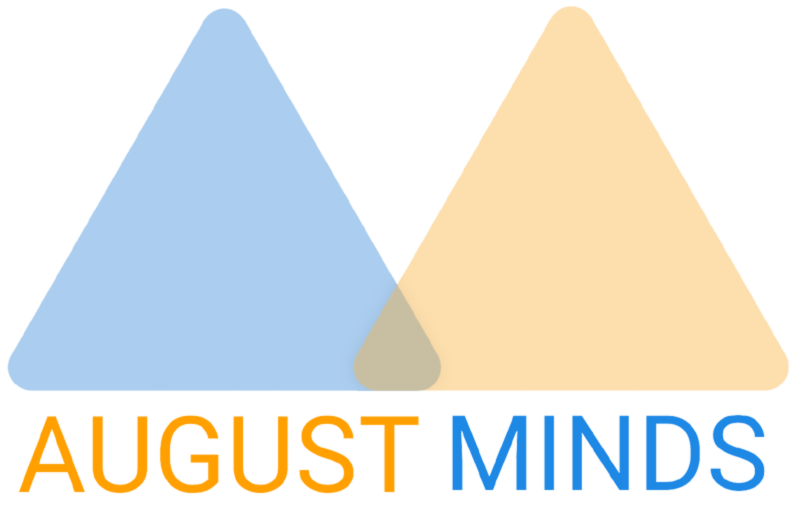
About Course
PMI Agile Certified Practitioner (PMI-ACP)
The PMI-ACP® (Agile Certified Practitioner) training provides you the upskill to become a skilled agile professional with knowledge of a broad range of agile methodologies. ACP is PMI’s fastest growing certification and lately the PMI-ACP exam has been updated with the addition of the Agile Practice Guide.
Course Content
Lesson 1. Introduction
-
1: Course Introduction
00:00 -
2: Eligibility Requirements
00:00 -
3: Certification, Fees and Renewal
00:00 -
4: About our course
00:00
Lesson 2. Agile Principles and Mindset Part1
-
1: Agile Principles and Mindset Part one
00:00 -
2: Introduction to Agile
00:00 -
3: Agile Engineering Practices
00:00 -
4: The Agile Manifesto
00:00 -
5: Agile Manifesto Explained
00:00 -
6: Principles of Agile Manifesto
00:00 -
7: Applying Principles of Agile Manifesto
00:00 -
8: Benefits of Agile
00:00 -
9: Project Life Cycle Characteristics
00:00 -
10: Key Takeaways
00:00 -
Knowledge Check
00:00
Lesson 3. Agile Principles and Mindset Part 2
-
1: Agile Principles and Mindset Part two
00:00 -
2: Agile Methodologies
00:00 -
3: Agile Mindset
00:00 -
4: Where to Apply Agile
00:00 -
5: Meaning of Scrum
00:00 -
6: Features of Scrum
00:00 -
7: Three Pillars of Scrum
00:00 -
8: Scrum Roles
00:00 -
9: Keys terms of Scrum
00:00 -
10: Scrum Meetings
00:00 -
11: Scrum: An Empirical Process
00:00 -
12: Extreme Programming
00:00 -
13: Extreme Programming Practices Part A
00:00 -
14: Extreme Programming Practices Part 2
00:00 -
15: Roles in Extreme Programming
00:00 -
16: Process Diagram of XP
00:00 -
17: Crystal Method
00:00 -
18: Properties of Crystal Method
00:00 -
19: Key Categories of Crystal Method Part A
00:00 -
20: Key Categories of Crystal Method Part B
00:00 -
21: DSDM
00:00 -
22: Basic Principles of Atern
00:00 -
23: Planning Philosophy in DSDM
00:00 -
24: DSDM Techniques
00:00 -
25: DSDM Phrases
00:00 -
26: Feature-Driven Development
00:00 -
27: Agile Project Management
00:00 -
Key Takeaways
00:00 -
Knowledge check
00:00
Lesson 4. Value Driven Delivery Part 1
-
1: Value-Driven Delivery – Part One
00:00 -
2: Quantifying Customer Value
00:00 -
3: Time Value of Money
00:00 -
4: Time Value of Money: Example
00:00 -
5: The Financial Feasibility of Projects
00:00 -
6: Return on Investment ROI
00:00 -
7: Net Present Value (NPV)
00:00 -
8: NPV Example
00:00 -
9: Internal Rate of Return (IRR)
00:00 -
10: Payback Period
00:00 -
11: Payback Period – Example
00:00 -
12: Prioritization of Functional Requirements
00:00 -
13: MoSCoW
00:00 -
14: Kano Model
00:00 -
15: Relative Weighting
00:00 -
16: Prioritization of Non-Functional Requirements
00:00 -
17: Risk Management in Agile
00:00 -
Key Takeaways
00:00 -
Knowledge check
00:00
Lesson 5. Value Driven Delivery Part 2
-
1. Value-Driven Delivery – Part Two
00:00 -
2. Minimal Viable Product
00:00 -
3: Project Planning using MVP
00:00 -
4: Agile Compliance
00:00 -
5: Key Drivers of Agile Compliance
00:00 -
6: Incremental Delivery
00:00 -
7: Review and Feedback
00:00 -
8: Earned Value Management
00:00 -
9: Earned Value Metrics
00:00 -
10: Earned Value Metrics: Example
00:00 -
11: Agile Contracts: Components
00:00 -
12: Agile Contracting Methods
00:00 -
13: Fixed-Price or Fixed-Scope Contract
00:00 -
14: Time and Materials (T and M) Contract
00:00 -
15: T and M with Fixed Scope and Cost Ceiling
00:00 -
16: T and M with Variable Scope and Cost Ceiling
00:00 -
17: Bonus or Penalty Clauses
00:00 -
18: Rolling Agile Contracts
00:00 -
19: Terms Used in Agile Contracts
00:00 -
Key Takeaways
00:00 -
Knowledge check
00:00
Lesson 6. Stake Holder Engagement Part 1
-
1: Stakeholder Engagement – Part One
00:00 -
2. Stakeholder Management
00:00 -
3. Project Charter
00:00 -
4: Understanding Stakeholder Needs
00:00 -
5: Agile Wireframes
00:00 -
6: User Story
00:00 -
7: Story Card Information
00:00 -
8: Agile Personas
00:00 -
9: Theme and Epic
00:00 -
10: Agile Story Maps
00:00 -
11: Community and Stakeholder Values
00:00 -
Key Takeaways
00:00 -
Knowledge check
00:00
Lesson 7. StakeHolder Engagement Part 2
-
1: Stakeholder Engagement – Part Two
00:00 -
2: Community Management
00:00 -
3: Communication and Knowledge Sharing
00:00 -
4: Social Media Communication
00:00 -
5: Information Radiators
00:00 -
6: Burnup and Burndown Charts
00:00 -
7: Kanban or Task Board
00:00 -
8: Impediment logs
00:00 -
9: Characteristics of Information Radiators
00:00 -
10: Agile Modeling
00:00 -
11: Active Listening
00:00 -
12: Key Elements of Active Listening
00:00 -
13: Globalization Diversity and Cultural Sensitivity
00:00 -
14: Cultural Diversity Issues: Recommendations
00:00 -
15: Agile Facilitation Methods
00:00 -
16: Agile Negotiation and Conflict Management
00:00 -
17: Five Levels of Conflict
00:00 -
Key Takeaways
00:00 -
Knowledge check
00:00
Lesson 8. Team Performance Part 1
-
1: Team Performance – Part One
00:00 -
2: Features and Composition of Agile Teams
00:00 -
3: Stages of Agile Team Formation
00:00 -
4: High Performance Teams
00:00 -
5: Generalized Specialist
00:00 -
6: Team Responsibility
00:00 -
7: Self-Organization
00:00 -
Key Takeaways
00:00 -
Knowledge check
00:00
Lesson 9: Team Performance Part 2
-
1: Team Performance – Part Two
00:00 -
2: Agile Leadership
00:00 -
3: Best Practices of Agile Leadership
00:00 -
4: Management VS Leadership
00:00 -
5: Servant Leadership
00:00 -
6: Coaching and Mentoring
00:00 -
7: Agile Coaching
00:00 -
8: Agile Emotional Intelligence
00:00 -
9: Team Motivation
00:00 -
10: Maslow’s Theory
00:00 -
11: Frederick Herzberg’s Theory
00:00 -
12: McClelland’s Theory
00:00 -
13: Boehm’s Theory
00:00 -
14: Team Space
00:00 -
15: Co-Located Teams
00:00 -
16: Distributed Teams
00:00 -
17: Co-Located vs. Distributed Teams
00:00 -
18: Osmotic Communication
00:00 -
19: Team Collaboration and Coordination
00:00 -
20: Collaboration Technology
00:00 -
21: Communication Gap-Example One
00:00 -
22: Communication Gap-Example Two
00:00 -
23: Brainstorming Sessions
00:00 -
24: Team Velocity
00:00 -
25: Velocity-Example One
00:00 -
26: Velocity-Example Two
00:00 -
27: Sample Velocity Chart
00:00 -
28: Agile Tools
00:00 -
Key Takeaways
00:00 -
Knowledge check
00:00
Lesson 10: Adaptive Planning Part 1
-
1: Adaptive Planning Part one
00:00 -
2: Planning Philosophy
00:00 -
3: Aligning Agile Projects
00:00 -
4: Rolling Wave Planning
00:00 -
5: Timeboxing
00:00 -
6: Best Practices of TimeBoxing
00:00 -
7: Advantages of Timeboxing
00:00 -
8: Agile Estimation
00:00 -
9: Story Points
00:00 -
10: Assigning Story Points
00:00 -
11: Story points estimation
00:00 -
12: Story Points Estimation Scale: Example
00:00 -
13: Value Points
00:00 -
14: Ideal Days
00:00 -
15: Story Points vs. Ideal Days
00:00 -
16: Wideband Delphi Technique
00:00 -
17: Planning Poker
00:00 -
18: Planning Poker Example
00:00 -
19: Affinity Estimation
00:00 -
Key Takeaways
00:00 -
Knowledge check
00:00
Lesson 11. Adaptive Planning Part 2
-
1: Adaptive Planning – Part Two
00:00 -
2: Project Size Estimation
00:00 -
3: Release Plan
00:00 -
4: Release Plan: Example
00:00 -
5: Iteration Plan
00:00 -
6: Types of Iteration Planning
00:00 -
7: Iteration lifecycle Example
00:00 -
8: Release Plan vs. Iteration Plan
00:00 -
9: Agile Product Roadmap
00:00 -
10: Backlog Refinement – Part Two
00:00 -
11: Value-Based Analysis and Decomposition
00:00 -
12: Agile Cone of Uncertainty
00:00 -
13: Velocity Variations
00:00 -
14: Sprint Reviews
00:00 -
15: Sprint Retrospectives
00:00 -
16: Mid-Course Corrections
00:00 -
Key Takeaways
00:00 -
Knowledge check
00:00
Lesson 12. Problem Detection and Resolution part 1
-
1: Problem Detection and Resolution – Part One
00:00 -
2: Agile Problem Detection
00:00 -
3: Problem Detection Technique
00:00 -
4: Fishbone Diagram
00:00 -
5: Five Whys Technique
00:00 -
6: Control Charts
00:00 -
7: Lead Time and Cycle Time
00:00 -
8: Kanban
00:00 -
9: Kanban Process
00:00 -
10: Example of Kanban Board
00:00 -
11: Work In Progress
00:00 -
12: Managing Constraints
00:00 -
13: Little’s Law
00:00 -
14: Escaped Defects
00:00 -
15: Agile Problem Solving
00:00 -
Key Takeaways
00:00 -
Knowledge check
00:00
Lesson 13. Problem Detection and Resolution part 2
-
1: Adaptive Planning
00:00 -
2: Metrics and Measures
00:00 -
3: Benefits of Metrics
00:00 -
4: Examples of Metrics
00:00 -
5: Baseline Metrics
00:00 -
6: Variance and Trend Analysis
00:00 -
7: Risk Management Life Cycle
00:00 -
8: Step One-Risk Identification
00:00 -
9: Step Two-Risk Assessment
00:00 -
10: Step Three-Risk Response Strategies
00:00 -
11: Step Four Risk Review
00:00 -
12: Risk Log
00:00 -
13: Risk Burndown Chart
00:00 -
14: Risk Profile Graph
00:00 -
15: Spike
00:00 -
16: Agile Failure Modes
00:00 -
17: Agile Coach Failure Modes
00:00 -
18: Troubleshooting Guidelines
00:00 -
Key Takeaways
00:00 -
Knowledge check
00:00
Lesson 14. Continuous Improvement Part 1
-
1: Continuous Improvement – Part One
00:00 -
2: Kaizen
00:00 -
3: Kaizen in Agile
00:00 -
4: Lean
00:00 -
5: Defining Waste Manufacturing and Software Development
00:00 -
6: A Five Step Process to Becoming Lean
00:00 -
7: Value Stream Mapping
00:00 -
8: Agile Retrospectives
00:00 -
9: Cargo Smells
00:00 -
10: Conducting a Retrospective
00:00 -
11: Brainstorming Techniques
00:00 -
12: Process Analysis Techniques
00:00 -
13: Agile Process Tailoring
00:00 -
14: Project Factors That Influence Tailoring
00:00 -
Key Takeaways
00:00 -
Knowledge check
00:00 -
PMI ACP
Lesson 15. Continuous Improvement Part 2
-
1: Continuous Improvement – Part Two
00:00 -
2: Quality in Agile
00:00 -
3: Best Practices for Quality in Agile
00:00 -
4: Best Practice One-Verification and Validation
00:00 -
5: Best Practice Two-Exploratory Testing
00:00 -
6: Best Practice Three-Usability Testing
00:00 -
7: Best Practice Four-Test-Driven Development
00:00 -
8: Test-Driven Development Advantages
00:00 -
9: Acceptance Test-Driven Development Cycle (ATDD)
00:00 -
10: Best Practice Five – Contagious Integration
00:00 -
11: Best Practice Six: Definition of Done
00:00 -
12: Testing Pyramid and Quadrant
00:00 -
13: Checklist for Story Completion
00:00 -
14: Agile Flowchart
00:00 -
15: Agile Spaghetti Diagram
00:00 -
16: Organizational Self Assessment
00:00 -
Key Takeaways
00:00 -
Knowledge check
00:00
